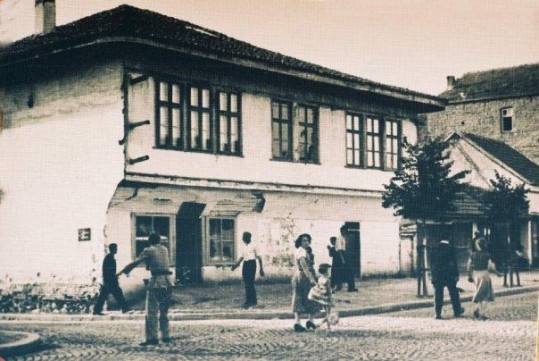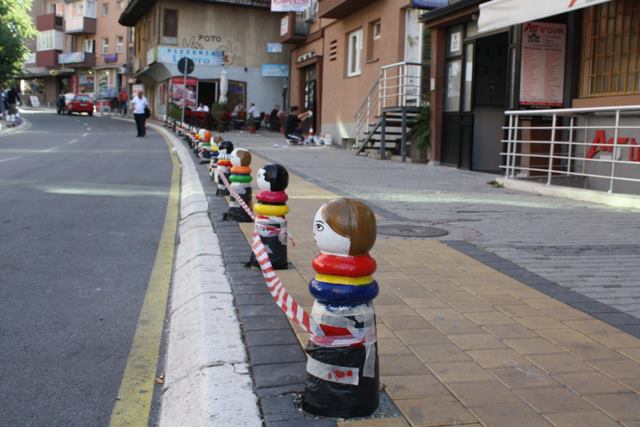
The Filigree Maker: the Kosovan Pavilion at the 2012 Venice Biennale
Kosovan architecture made its debut at the 13th International Architecture Exhibition – La Biennale di Venezia. This landlocked, new European country is now among 55 nations that have presence in the largest and most prestigious architectural event in the world. The country’s pavilion design, The Filigree Maker, of the curator Përparim Rama was chosen by the Kosovo`s Ministry of Culture as an opportunity to promote the heritage and potential of the Republic of Kosovo in architecture.
“When David Chipperfield, the director of the 13th Venice Architecture Biennale, titled the Exhibition ‘Common Ground’ and asked colleagues to reflect on shared values of architecture rather than the ubiquitous individual acts, curator Rama had to excavate deep into Kosovo’s tradition for inspiration in order to create a pavilion that would thoroughly expose the architecture of the newly independent country.” says for ONUP prof. Mars Podvorica, Principal Architect of MAP`D Studio in New York and lecturer at the City University of New York.
In the exhibit, which was named after an ancient and traditional metal-making technique that twists threads of wire into jewelry (known as filigrani in Kosovo), filigree is the main component used within the installation to represent the cultural revival occurring within the country. Weaving the Arsenale’s room with screens projecting images on the walls and floor, the web of wires hangs from the ceiling and strings together an emotional barometer related to Kosovan streets and buildings. The idea is to expose Kosovo’s present architectural state while generating future design based on emotional responses.
At the opening ceremony were the Minister of Culture, Youth and Sports of Kosovo, Mr. Memli Krasniqi, the ambassador of Kosovo in Rome, Mrs. Bukurije Gjonbalaj, as well as many architects and organizers of Biennale. “I am happy that the work carried out by the commissioner Bekim Ramku and the curator Përparim Rama resulted as very successful. Kosovo as a young country has a rich history and cultural heritage and what is most important, has a great potential that I hope we will have the opportunity to promote in the world by supporting creative minds” said Minister Krasniqi at the inauguration of the pavilion.
With the exhibition, The Filigree Maker, visitors and participants world-wide are given the opportunity to help shape the future Kosovo by sharing their emotional response to images of existing architecture. The curator and founder/director of the London – based firm 4M, Peparim Rama, aimed at making this event interactive, using mostly web-based and social networking technologies through email, and networks such as Twitter and Facebook, biennale attendees, as well as anyone who has internet access is able to participate by way of selecting architectural and urban landscape images from the country and linking them directly to a sentiment: happiness, sadness, entrapment, excitement, freedom, or anger. Visitors are able to select an image from a preselected library or choose photographs that have been uploaded by other participants. “Rama brought to Venice a digital artisan to weave, twist and curl a structure based on an emotional state that the artisan’s clients – biennale attendees or anyone exposed to the images of Kosovo’s landscape and architecture – were receiving from radiation of the existing architecture fabric in Kosovo.” adds Podvorica.
“The technique looks quite mysterious, to the point that it makes one want to research and study it.” tells ONUP Ermir Gjoka, graduate of the Spritzer School of Architecture at City University of New York and architect at Mascioni & Behrmann Architects. “The fact that design idea is traditional and relatively futuristic at the same time shows the sophisticated stage architecture in Kosovo has reached. Architecture addresses people rather than individuals, thus, when a design idea gets input from the inhabitants themselves it becomes an `ever changing` constant.” Gjoka adds. Visitors to the exhibit will become agents of change, impacting the structure represented in the Kosovo Pavilion, and possibly affecting future legislation. As put by the curator Rama, “This exhibit intends to create guides of current structure, creative design and future innovation.”
Ever since its foundation in 1895, La Biennale di Venezia has been at the forefront in the research and promotion of contemporary architectural trends, and as such it will hopefully raise the new country’s profile in the international arena of art and architecture, which while making strides, is still lagging behind due to a building boom which has covered the city with a sprawl of store fronts and apartment and office buildings. “Beyond the impotence of the newly constructed architecture in Kosovo, Rama’s Filigree Maker truly does raise the profile of Kosovo in the international architecture stage. And just like his filigree wire whose path is paved by an emotional response, we certainly hope that the created structure will serve as a guide and it will validate the critical fact of how influential we are as architects in shaping our common ground.” concludes Podvorica.
Images courtesy designboom & archdaily





